Story by Dino Brunori
Enrico Nardi, described by the Americans ‘the wiz who can squeeze more power from an engine than the official R&D of the factory’ is a name well known to all car enthusiasts. His career began in 1930 with Fiat as a test driver. In 1932 he went to Lancia where he became the pupil of Vincenzo Lancia, then in 1937 landed a job with Scuderia Ferrari with increasingly greater responsibilities, so much so that from 1940 he was Enzo Ferrari’s right-hand man.
The adventure with Ferrari ended in 1947, when, after receiving a substantial cash settlement together with the remaining pieces of engine type AAC 815, Enrico returned to Turin and with a partner, Renato Danese, established Nardi Danese. The company’s purpose was the construction of sport cars and the production of components for tuning engines.
From here started an adventure that unfolded for fifteen years, not only creating tuning accessories but also about sixty beautiful cars; sports racers, F2, and F3 open wheelers, GT cars, show cars for exhibitions, and models produced on commission. Most of them had a tubular frame, of which Nardi was the forerunner, and powered by a variety of engines, such as BMW, Maserati, Lancia, Alfa, Fiat, Panhard, Crosley, and even Plymouth. Bodied by the most talented masters of Turin such as Allemano, Bertone, Boano, Frua, Motto, Vignale, they were unique or were produced in very small batches.
The first sport cars built in 1947 were a small number of siluros (torpedoes with mudguards) equipped with a 750 cc twin-cylinder engine taken from the BMW R 75 motorcycle, which were available in abundance in the war surplus scrapyards, and promptly tuned by Nardi who built an unbeatable hillclimb car. This was followed by a sport car with an 8 cylinder 1500cc engine, called ‘Marco’ by the customer, Count Rudy Crespi. It was in many ways the copy of the AAC 815 and was made using the components received as a settlement of the Ferrari years. Why do we talk about these two models? Because we will find them later engaged in various editions of the Mille Miglia.
In 1948 Nardi Danese constructed five sports models with the ‘marine’ Alfa Romeo 2500 cc 6 cylinder engine: it was a splendid car equipped with an open wheel body designed by Bianco and built by Motto. Its limitations were the excessive weight and the low power of the engine. With only 150 hp, it actually didn’t deliver more than 125 hp and was never truly competitive. Three of these cars entered the Mille Miglia; number 30 of Tadini / Canavesi, with the number 65, Gurgo Salice / Rosa, and with number 251, Beneventano / D’Agata. None of them reached Brescia, being all forced to retire due to trivial mechanical failures.
In 1949, two of these ND Alfa 2500 models were at the start: with the number 636, Beneventano / Danese and with 646, Gurgo Salice / Cornaggia Medici, whose body was replaced by Motto, at the request of the owner, with a more comfortable coupe model to deal with adverse weather conditions. Again, neither of the two cars arrived in Brescia and after this race their Italian history ends.
The 1950 edition saw the start of the flagship model of the ND production, the slim car powered by the 750 cc BMW engine: the Scala / Trevisan crew, with number 244, tried the adventure. Unfortunately for them, the ND 750, unbeatable in short races and hillclimbs, was absolutely unsuitable for long distances, so that after Rome they are forced to retire.
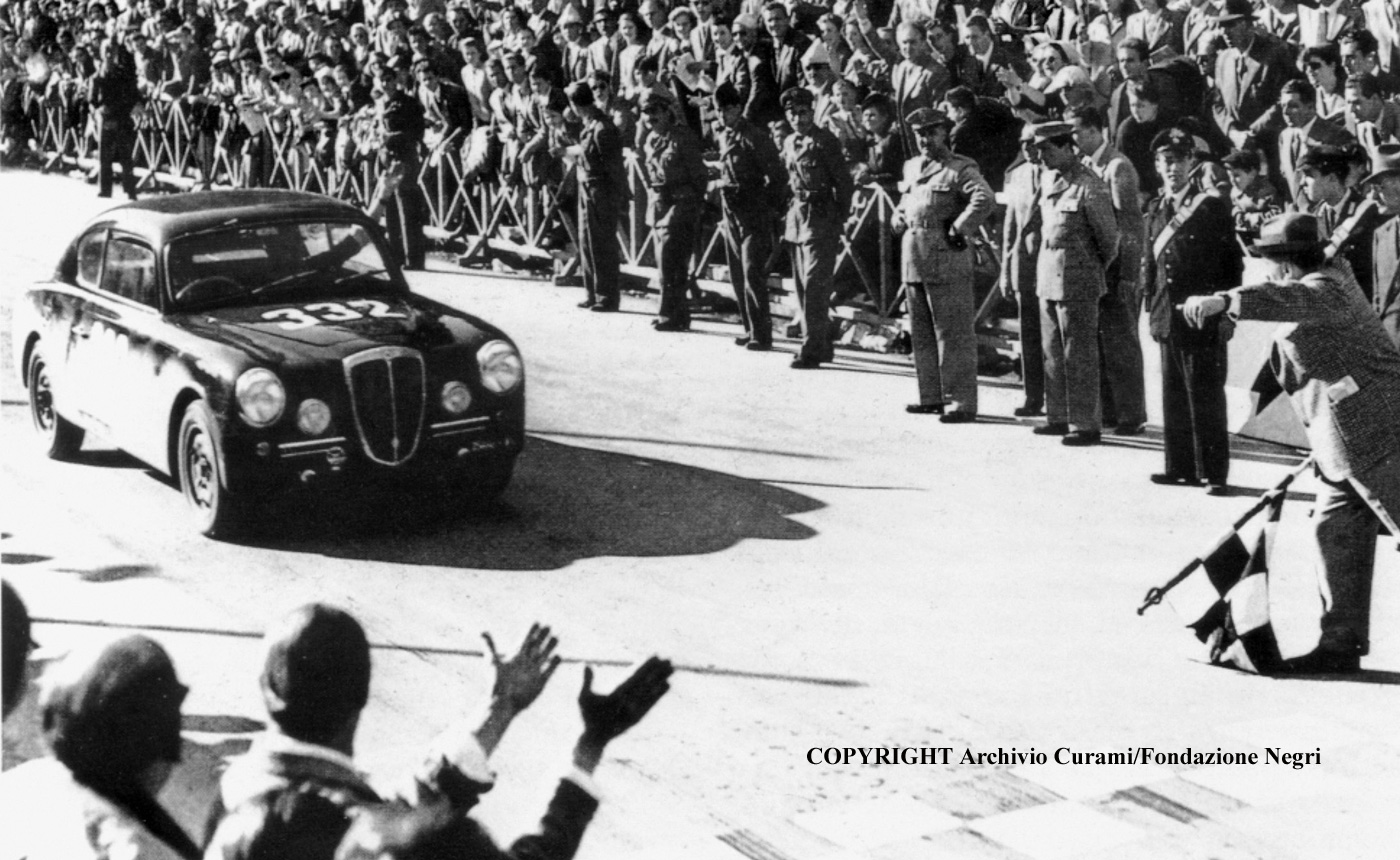
The Nardi-modified Lancia of Bracco/Maglioli arrives at the finish of the 1951 Mille Miglia, in second place behind the big 4.1 liter Ferrari of Villoresi.
The most prestigious result for Nardi came in the 1951 Mille Miglia, albeit indirectly. The link between Enrico and Lancia had always remained very close, and on the upper floors of Borgo San Paolo they were well aware of the tuning ability of the small workshop. So when Nardi launched a number of components designed to enhance the power of the Lancia Aurelia B20, including a special intake manifold and a new-profile crankshaft, the company decided to entrust him with the preparation of the four official cars entered in the race. The result was astonishing, with the cars achieving respectively 2nd, 5th, 7th and 16th overall, with the Bracco / Maglioli Lancia arriving in Brescia only twenty minutes behind the winner, Villoresi who was driving a Ferrari 340 America of displacement and power more than double of the Aurelia-Nardi.
Two Nardi cars were engaged in the 1952 Mille Miglia. The first was the ND BMW 750 owned by Valenzano, the top driver of the marque, who was paired with Da Milano, and started from the platform of Viale Venezia with the number 2240. The model again proved unsuitable for long distances, abandoning the race before arriving in Rome. The second ND present was the ‘Marco’ 1500 8 cylinder. After Count Rudi Crespi transformed it into a splendid cabriolet with Bertone bodywork, as a wedding gift for the bride, the car came into the hands of Ilfo Minzoni, a Tuscan gentleman driver of remarkable stature.
Minzoni sent the car back to Nardi to get it ready for the race, and for the occasion the body was replaced by Motto with another, taken from the car of Gurgo Salice in 1949, readapted with the wraparound mudguards in accordance with the new rules of sports code. But the Minzoni / Baggiani crew, starting with number 540, was no more fortunate than the other ND cars and was forced to retire shortly before reaching control at Florence.
At the ‘53 Thousand Miles a ND BMW 750 with Lombardi / Prati, number 2230, was entered, but the car did not show up. Instead, Minzoni with the ND 1500, tried again with his partner Sarti. This time his attempt was successful: they placed 47th O/A and 6th in class. In 1954 we find another ND 750 BMW with Tommasinelli / Fabbri, who started with the number 2300. But they didn’t reach Brescia, because an engine failure obliged the two friends to leave the race near Viterbo.
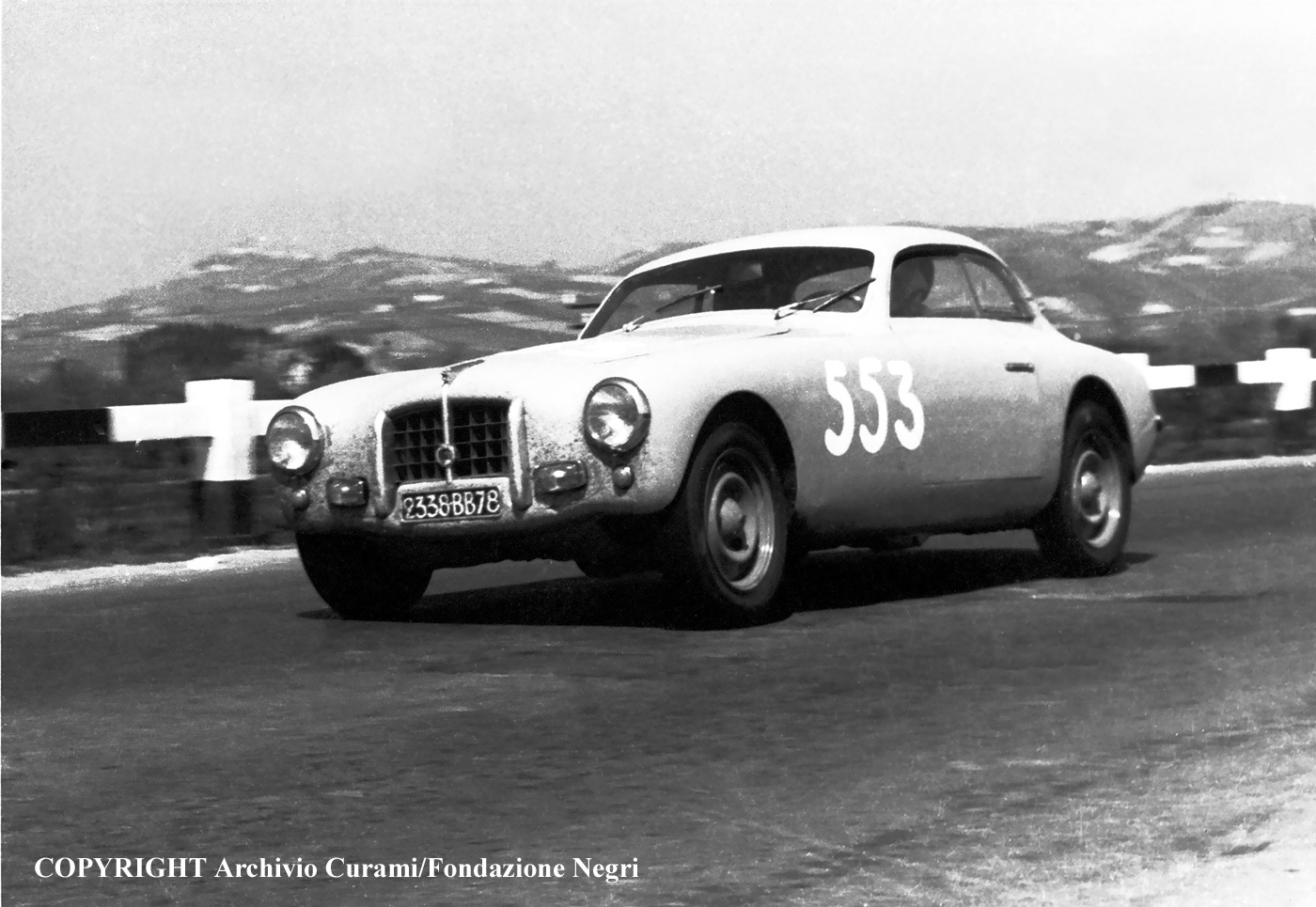
The Dubois Nardi, with a Frua body, Nardi frame and Peugeot engine is seen in the Italian countryside during the 1955 event.
The ‘55 Mille saw a Nardi Dubois car at the start. It is a model built at the end of 1953 by Nardi in four units with a coupe body by Frua commissioned by the Parisian dealer of Peugeot, Marcel Dubois, from which it takes its name. The car had a tubular chassis and the Peugeot 203 engine developed by Nardi with specific components and a displacement of 1500 cc. The crew David / Terray, who started with the number 553, completed the race 52nd overall and 5th class.
In 1957 Nardi, riding the wave of success of the Fiat 600 model, presented its own coupe version with an engine enlarged to 750 cc and Vignale bodywork designed by Michelotti. The car, known as the Fiat Nardi 750 Vignale, was produced in small series and a sample, driven by Timossi / Da Milano, participated with the number 27 in what will be the last real Mille Miglia: it ended the race with an insignificant 223rd O/A and 43rd in class.
Enrico Nardi died of leukemia at the age of 59 on August 1966. And here our story ends, but I am sure that a question arises: what happened to his cars? Those who were among the most charismatic and iconic cars of their period have survived in about forty specimens, scattered throughout the world between the USA, Europe and Japan and jealously kept by today’s owners. And this exclusivity shines through the very few appearances to the Mille Miglia retrospective, so much so that since 1982 there have been fewer than a dozen occasions in which a car with the ND shield on the bonnet was seen again in Viale Venezia.
Read More Etceterini in the Mille Miglia
Stanga
Mor & Sca
Dino Brunori is the author of Nardi, A Fast Life.
Here is a review of his book:
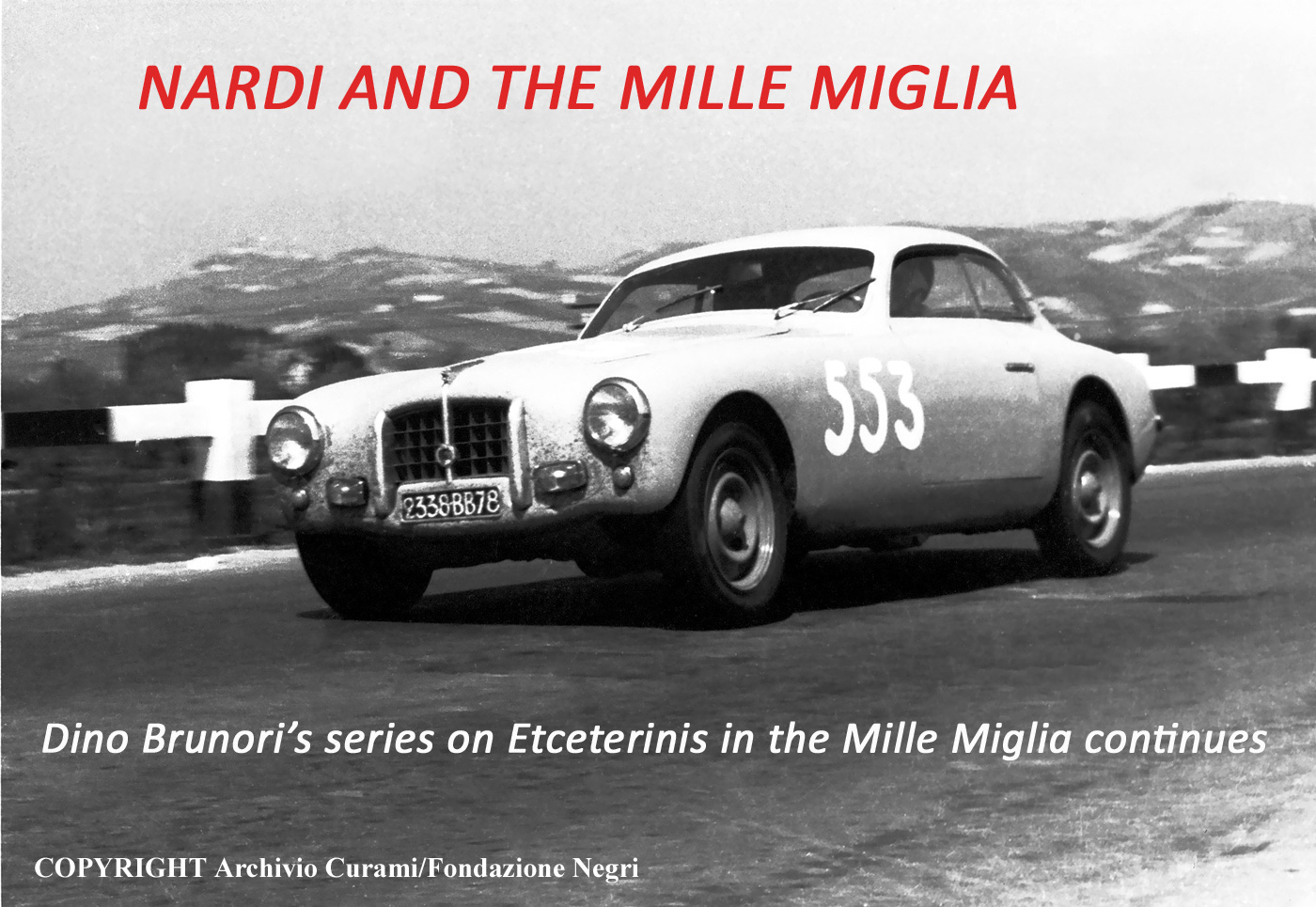
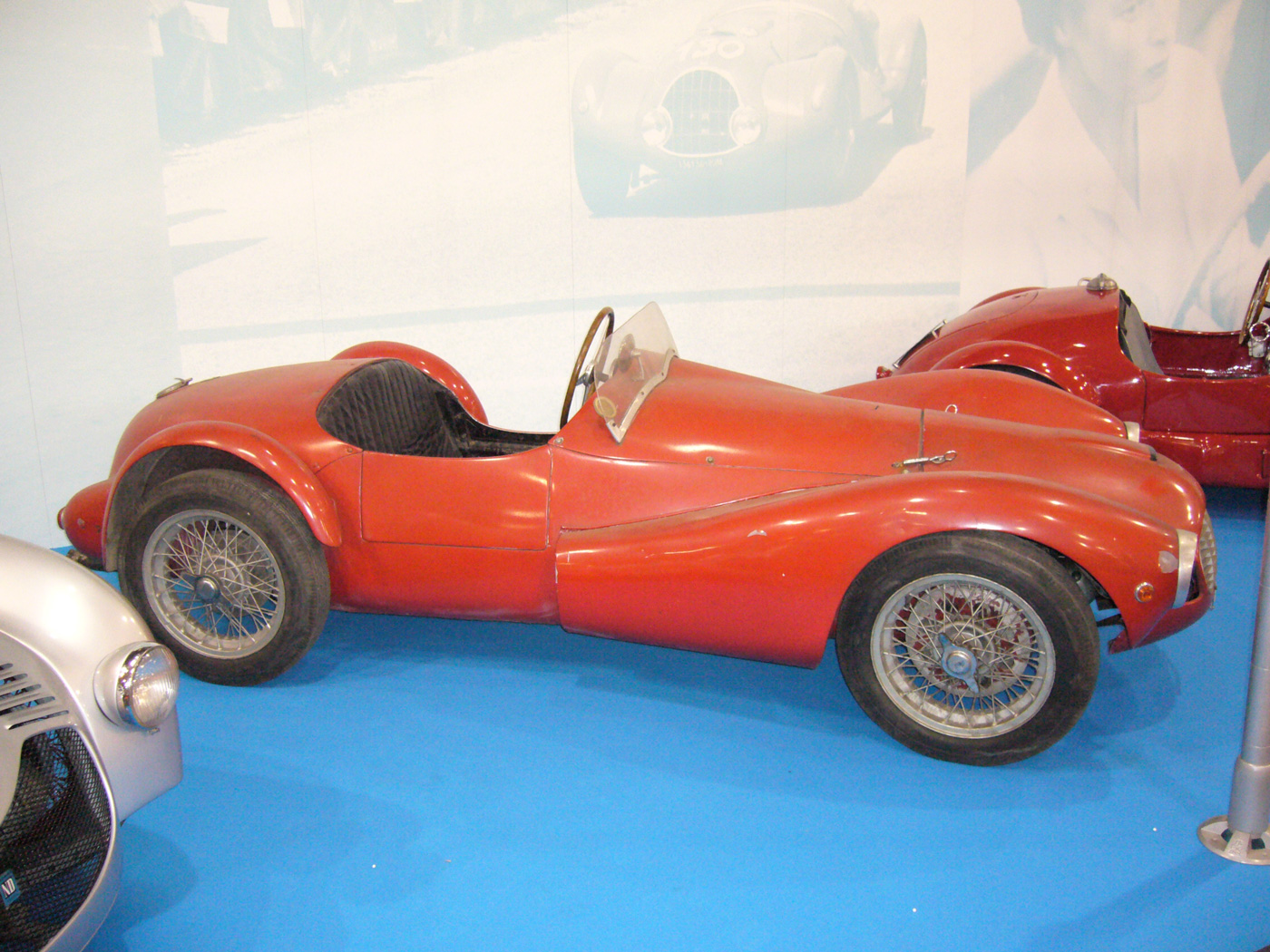

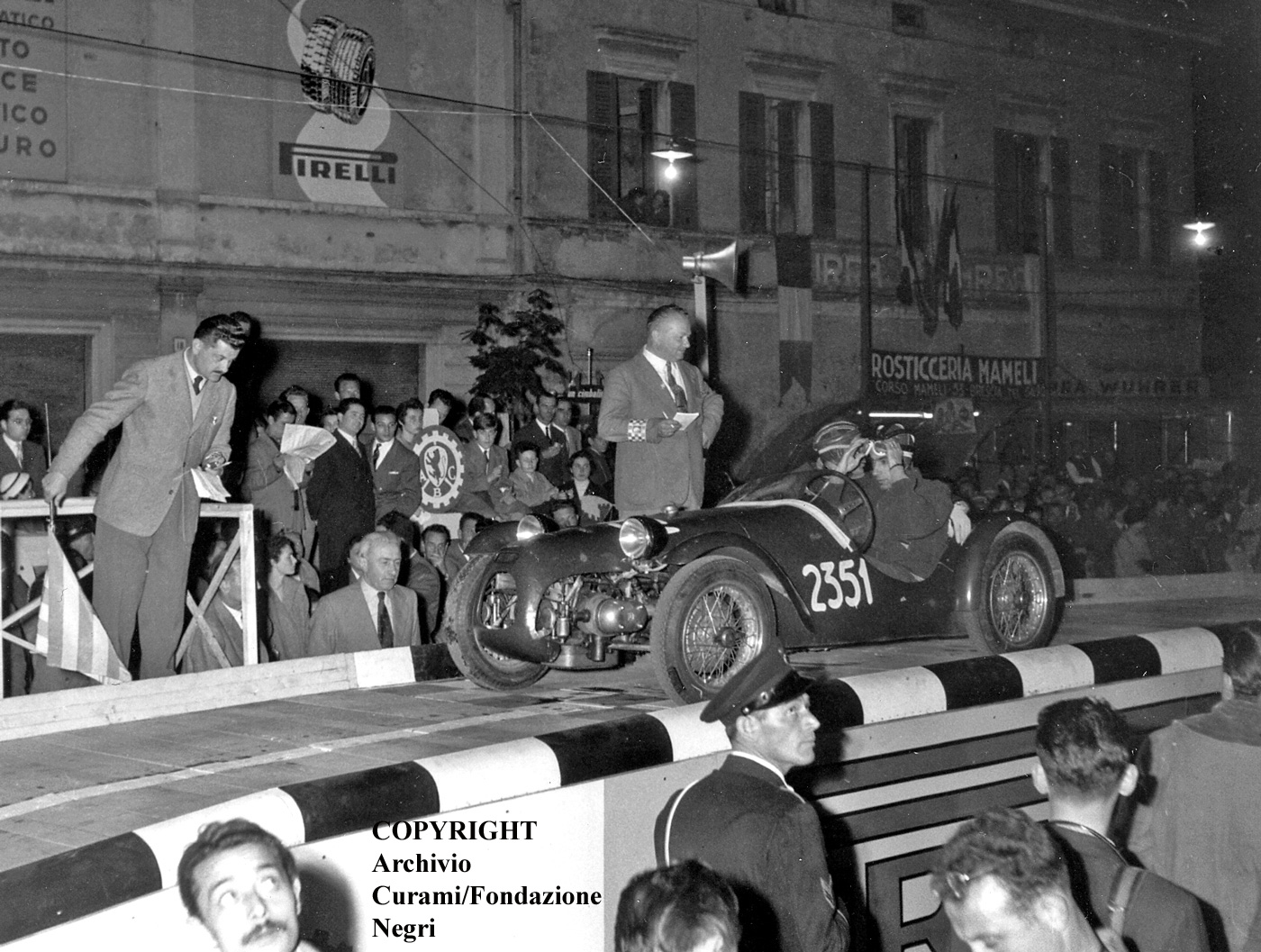
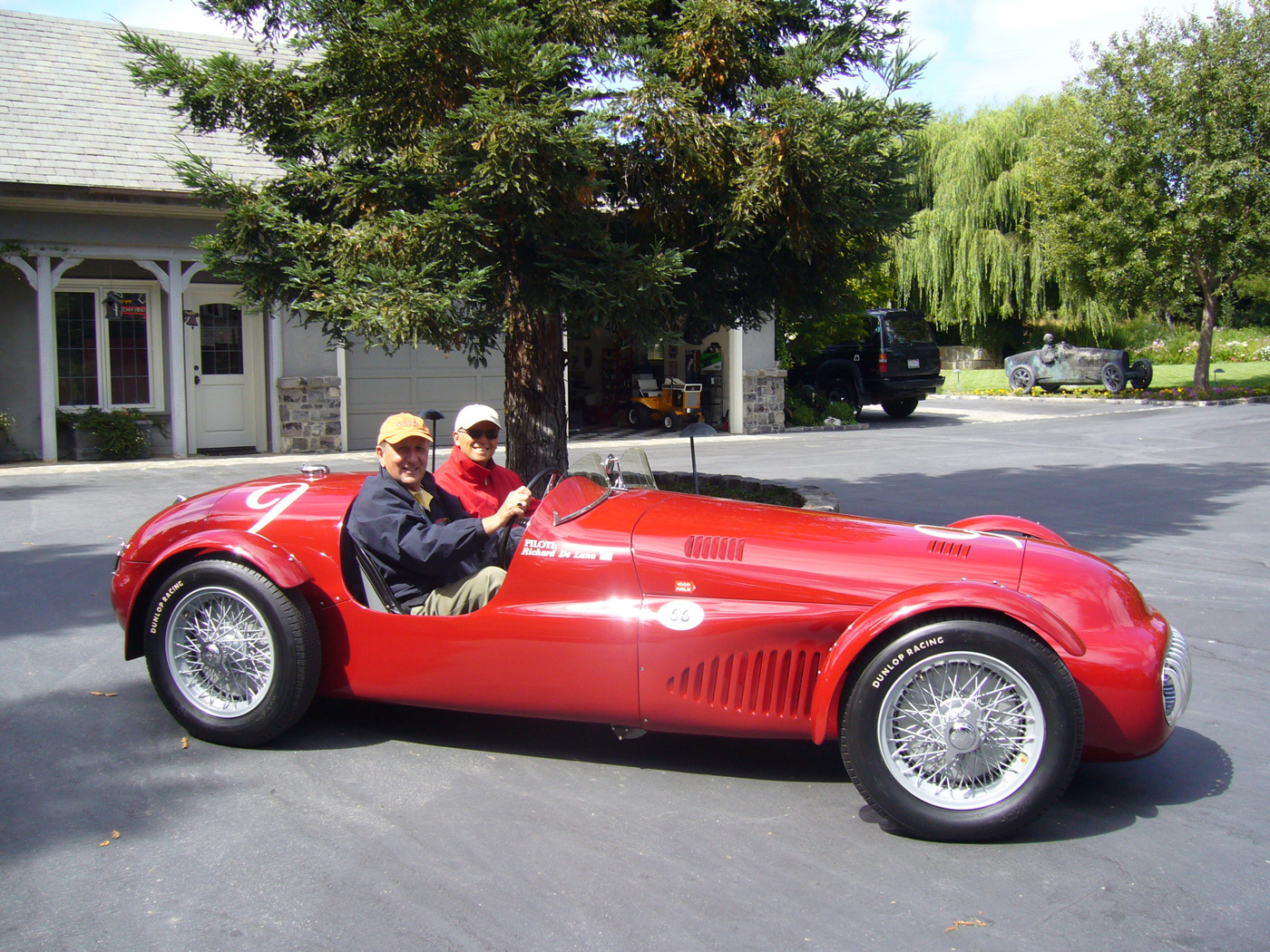
I always enjoyed the Nardi productions and had a nice visit to his Turin works in 1958. Photos at REVS. I have always wondered what happened to his mid-engined Lancia-powered Formula 2 car.
When I was an industry consultant I dreamed of producing a short run of ND cars with the BMW flat-twin engine. I gained permission from the then-holder of the Nardi rights but never had the time to pursue that (still happy) idea,
My good friend and racing buddy Don Baldocchi had, until recently, two very rare (if I recall the information from John deBoer correctly only three were built) Nardi/Frua cars powered by Crosley SOHC four cylinder motors. He retains his yellow #101 which he has raced for decades, while the other car, which did have some US race history, is in the hands now (and for sale) of Dan Rapley.
BTW…would love to know if Dino has any information on the participation of Siata 300BC variants in the MM and if enough for him to do an article?
In order to meet a dead-line, and having seen the ‘Nardi’ title come up on my e-mail, I resisted the temptation to open the latest ‘Veloce Today’ until Thursday. Dino Brunori has done a great article. With regard to the 6C2500 barchettas, I (we?) have not heard of the 3rd cycle-fendered ‘Alfa’, affectionately known as the ‘nostril car’, appearing since it was sold a few years ago,.
The Beneventano/Danese Nardi-Danese is alive and well, and mechanically being sorted out. I show my rather amateur photo when it appeared at an auction at Alexandra Palace in February 1979. At present it has just two 7inch headlights, which seem to be an Englishlook after market type, probably fitted when the car was assembled from ‘a box of bits’. The owner is seeking three Italian ones.
Of course, there was the coupé too, which was also featured in another edition of Veloce today. To judge from the photo, the change to larger engines did the handling no good at all. Corsa Research photo was taken by Joe Smith. One hopes that it is still lurking somewhere and has not gone to the wreckers.
sorry, guys, the photos did not attach, we are working on it
Peter